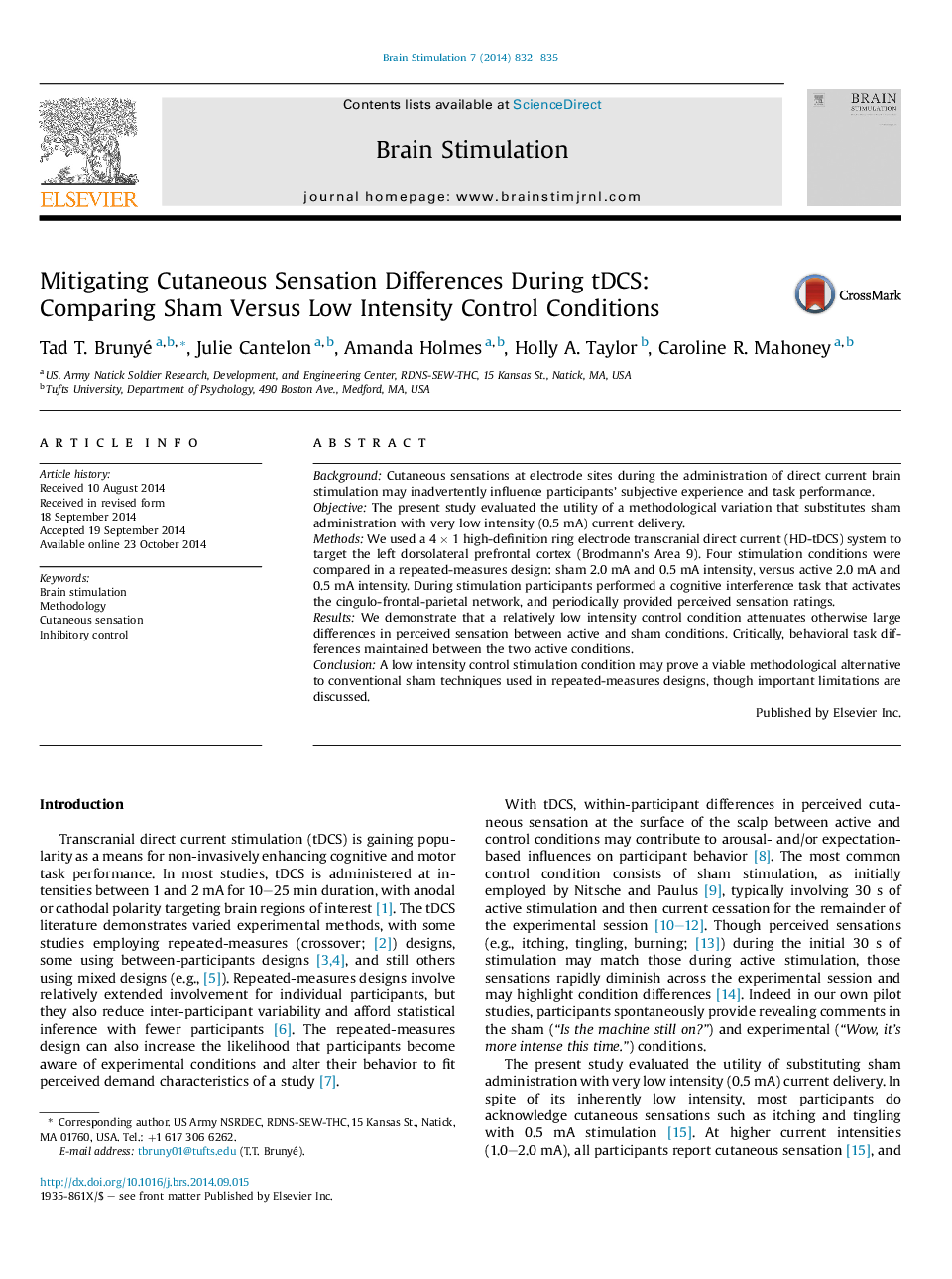| Article ID | Journal | Published Year | Pages | File Type |
|---|---|---|---|---|
| 6005392 | Brain Stimulation | 2014 | 4 Pages |
BackgroundCutaneous sensations at electrode sites during the administration of direct current brain stimulation may inadvertently influence participants' subjective experience and task performance.ObjectiveThe present study evaluated the utility of a methodological variation that substitutes sham administration with very low intensity (0.5Â mA) current delivery.MethodsWe used a 4Â ÃÂ 1 high-definition ring electrode transcranial direct current (HD-tDCS) system to target the left dorsolateral prefrontal cortex (Brodmann's Area 9). Four stimulation conditions were compared in a repeated-measures design: sham 2.0Â mA and 0.5Â mA intensity, versus active 2.0Â mA and 0.5Â mA intensity. During stimulation participants performed a cognitive interference task that activates the cingulo-frontal-parietal network, and periodically provided perceived sensation ratings.ResultsWe demonstrate that a relatively low intensity control condition attenuates otherwise large differences in perceived sensation between active and sham conditions. Critically, behavioral task differences maintained between the two active conditions.ConclusionA low intensity control stimulation condition may prove a viable methodological alternative to conventional sham techniques used in repeated-measures designs, though important limitations are discussed.
